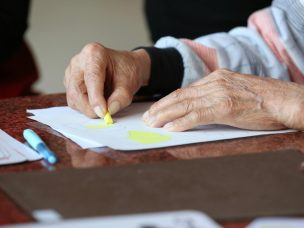In this MD Newsline exclusive interview with vitreoretinal specialist Dr. Michael Singer, we discuss how to provide culturally sensitive care and overcome language barriers.
MD Newsline:
How have you been able to implement culturally sensitive care in your practice? How do you deal with language barriers so that they don’t impede your ability to deliver quality care?
Dr. Michael Singer:
“In terms of culturally sensitive care, I live in South Texas, and obviously, we have a large Hispanic population. And although I only speak 20 words in Spanish, which is a real problem, I have a lot of people around me that help interpret.
In terms of consents for surgeries and procedures, we have them in both English and Spanish. In terms of our clinical trial informed consents, we have them in English and Spanish as well. Our goal is to make our patients feel more comfortable with the entire treatment of their disease process.
We’ve spent a lot of time encouraging patients to bring family members with them to appointments, not only to interpret the language but also to interpret the news that is being given to the patient.
In general, whether you speak English or Spanish, or any other language, typically, as the patient, it’s hard to comprehend a new medical condition. By having another set of ears, that’s a little less emotionally involved, the other person is more likely to remember what I said and discuss with the patient after the shock of diagnosis and discussion of treatment has worn off, the details of what’s involved.
For other languages, you know, we do have consents that are in different languages. For people who are hearing impaired, we’ve got interpreters for them as well. We also have educational videos in both English and Spanish to explain the disease and any procedures we plan on doing.
We also give handouts to our patients that [they] can take home. This hopefully will answer questions that patients and family may have forgotten to ask during the visit. In South Texas, we focus here on Spanish. In other parts of the country where other ethnic minorities are [prevalent], my fellow practitioners have handouts in those languages as well.”
Responses have been condensed and lightly edited.









